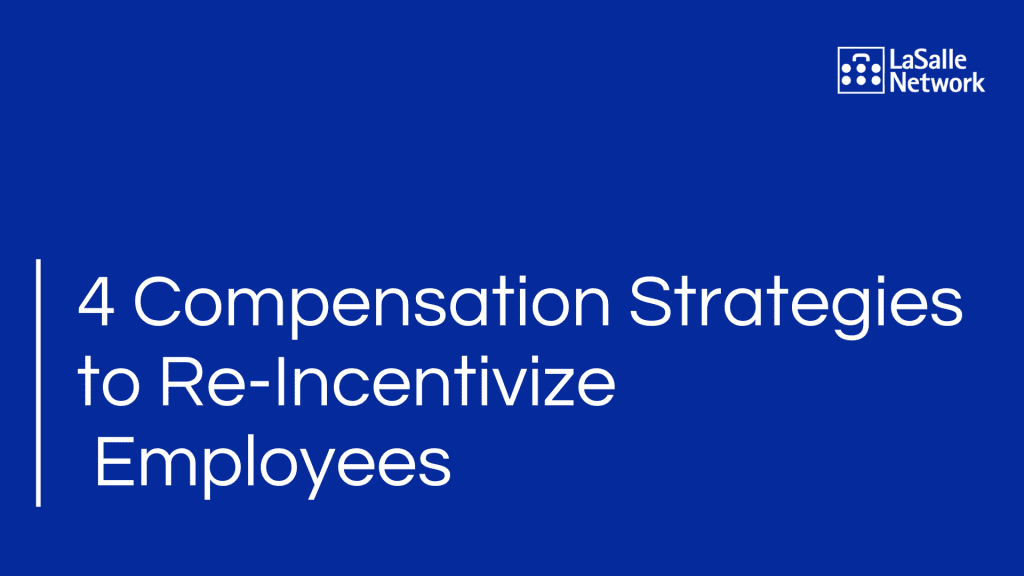Finance leaders are starting from scratch while forecasting business financials, as data once used as a guide is now irrelevant. With the market’s rapid fluctuation, CFOs are seemingly rewriting corporate budgets daily, managing business loans, and combing over the dollars and cents of payroll in order to keep their company afloat.
During both an economic and health crisis, making decisions about employee compensation is among the biggest and most difficult challenges facing organizations. As we approach the fourth quarter, financial recovery for many businesses is still an ongoing and fluctuating process that will likely bleed into 2021 and years to come. Finance leaders need to re-evaluate their compensation strategies now and decide what to consider while determining employee salary and incentives. Below, we discuss several ways many businesses are changing their compensation structures.
Restructuring Incentives
As many companies are still incurring monthly losses, 14% have decided to forgo annual raises all together this year. Many employees also will not receive or will receive only partial annual bonuses. While looking ahead to 2021, some companies are choosing to adjust incentive programs to be tied to strategic goals directly tied to driving revenue, if they are not already. These goals may constitute a large portion of the annual incentive formula. To allow for better line-of-sight as the market continues to shift, companies can utilize two 6-month performance periods rather than planning for the entirety of 2021.
Gauging employee performance without a benchmark to compare current data to, and simultaneously figuring out how to motivate staff if pay increases and incentives are not on the table, is a delicate balance. Some organizations are moving towards skill-based pay, rewarding employees with additional pay in exchange for formal certification of the employee’s mastery of skills, knowledge, and/or competencies. This strategy is meant to encourage employees to further contribute to the company by improving their skillset.
Some companies may consider implementing raises or bonuses for front-line staff and first responders based on the risk posed on the job. Hazard pay likely will not be across the board but awarded to those in positions that pose the highest risk requiring added incentive.
Localizing Pay for Remote Workers
While at the peak of the Coronavirus pandemic in May and June, an estimated 42% of the U.S. labor force was working from home, it is predicted that 25-30% of the workforce will continue to work remotely multiple days a week until the end of 2021. For employees preferring to work remotely moving forward, consider the benefit of offering localized compensation. This allows employers to pay employees fairly for their work based on the cost of living in their area, which could help to reduce costs.
Non-Monetary Incentives
While analyzing how to effectively cut costs while still retaining talent and keeping employees engaged, employers can consider non-monetary incentives they may be able to provide. In some cases, employers may consider providing new types of benefits, including increased flexibility in work hours. With an increased challenge of finding reliable childcare, some employers may consider offering childcare benefits. While it may not make financial sense at every company, for some, the cost of providing childcare benefits may be well worth the investment to attract and retain talent and increase productivity. Childcare benefits may include anything from dependent care programs, breast milk shipment coverage, and more.
Salary Reduction
Depending on the company, role, and merit of the employee, some salary reductions made during the height of the pandemic may become long-term adjustments. Some companies have announced cutting base salaries for c-suite executives permanently. At least 4 million private sector workers had their pay reduced since March with the median reduction by 10%. Each industry has been impacted differently, and how long these reductions last may vary by company.
While unemployment is high, some employers are also offering lower starting salaries to new hires based on decreased competition for talent and allowing them to work their way up over time.
This financial crisis has created a demand for radical, creative thinking by leadership teams. Today’s CFOs also need to have a much higher tolerance for ambiguity and think strategically about the years to come. By adjusting employee compensation to the current climate and providing effective incentives that make sense to the business’ bottom line, companies can prepare for the future ahead.
Are you looking to add new talent to your team? We’re here to help. Get connected with us here.





